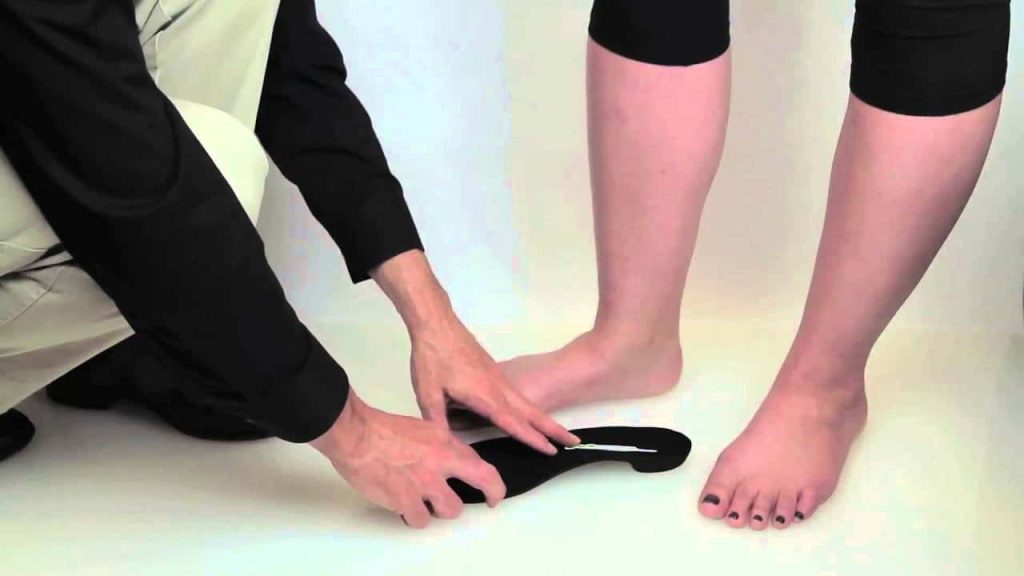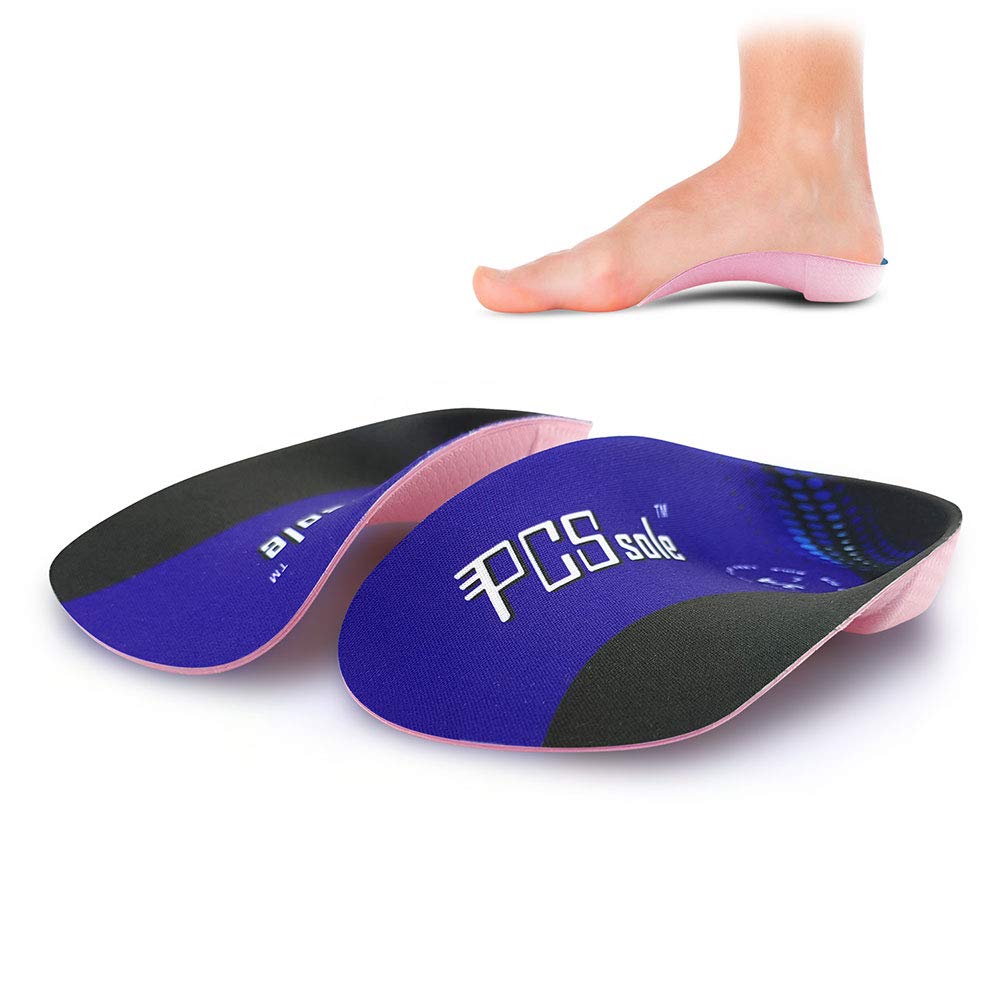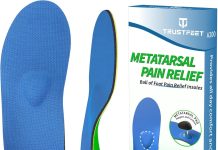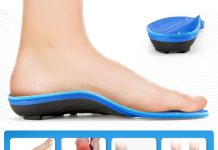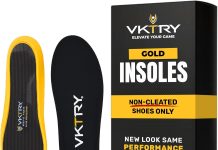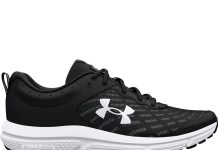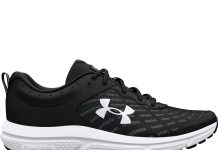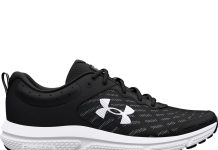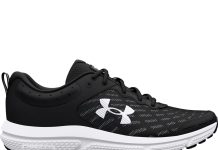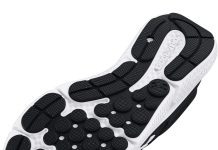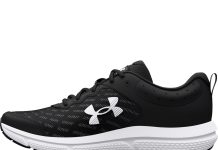Overpronation, a common foot condition where the arches of the feet roll inward excessively, can lead to a wide range of painful issues.
From knee and ankle problems to shin splints, finding a solution to this problem is crucial. In search of relief, many people turn to insoles, wondering if these unassuming inserts can make a difference.
In this article, we explore the effectiveness of insoles in alleviating the discomfort caused by overpronation, uncovering whether they live up to the hype and provide the much-needed support for our aching feet.
Understanding Overpronation
Definition of overpronation
Overpronation is a biomechanical condition characterized by excessive inward foot rolling during walking or running. It occurs when the foot arch collapses, and the foot and ankle cannot provide adequate shock absorption and stability. This excessive pronation can lead to various issues, including foot pain, musculoskeletal imbalances, and overuse injuries.
Causes of overpronation
Overpronation can be caused by a combination of factors, including genetics, foot structure, and specific biomechanical abnormalities. Some individuals are born with a naturally flat or low arch, predisposing them to overpronation. Other contributing factors may include weak or imbalanced muscles in the feet and legs, improper footwear, and repetitive activities that place excessive stress on the feet and ankles.
Effects of overpronation on the feet
Overpronation can significantly impact the feet, potentially leading to various foot conditions. This includes plantar fasciitis, Achilles tendonitis, shin splints, bunions, and stress fractures. The excessive inward rolling motion can cause an overloading of specific structures in the feet, leading to inflammation, pain, and discomfort.
Implications for overall musculoskeletal health
While overpronation primarily affects the feet, it can also have repercussions for the entire musculoskeletal system. The misalignment caused by overpronation can lead to imbalances in the legs, knees, hips, and lower back. These imbalances can stress joints, muscles, and ligaments, potentially leading to further pain, dysfunction, and even long-term musculoskeletal issues.
Overview of Insoles
Definition of insoles
Insoles, also known as orthotics or shoe inserts, are specialized devices designed to support and cushion the feet. They are typically placed inside the shoes and can be removable or built into the shoe itself. Insoles aim to improve foot alignment, alleviate pressure, and enhance shock absorption during walking and other weight-bearing activities.
Types of insoles available
Different types of insoles are available to address various foot conditions and provide varying levels of support. Some everyday insoles include arch support insoles, cushioned insoles, rigid insoles, heat-moldable insoles, and custom-made orthotics. The choice of insole depends on individual needs, foot structure, and the severity of overpronation.
Function of insoles
The primary function of insoles is to provide support and cushioning to the feet, helping to correct biomechanical imbalances and reduce excessive pronation. Insoles can redistribute pressure across the feet, reducing stress on specific areas and promoting a more even distribution of forces. They also aim to improve shock absorption, reducing the impact on joints and the risk of overuse injuries.
Common materials used in insoles
Insoles are made from various materials, each offering different levels of support, cushioning, and durability. Some common materials used in insoles include foam, gel, rubber, and thermoplastic. These materials can be combined to create insoles with specific properties, such as enhanced arch support, shock absorption, or moisture-wicking capabilities.
This image is the property of yoursole.com.
The Relationship Between Insoles and Overpronation
How insoles can potentially help with overpronation
Insoles can be a valuable tool for overpronation by addressing the underlying biomechanical issues. They provide additional support to the arches of the feet, helping to maintain a more neutral alignment and reducing inward rolling. This can decrease the strain on the muscles, tendons, and ligaments in the feet and ankles, potentially alleviating pain and discomfort associated with overpronation.
Alignment correction provided by insoles
Insoles’ critical benefits are their ability to correct alignment issues caused by overpronation. By supporting the arches and promoting a more neutral foot position, insoles can help realign the feet, ankles, and legs. This can reduce stress on joints and improve the overall mechanics of the lower limbs, potentially enhancing walking and running efficiency.
Insoles as a supportive measure for arches
Individuals with flat or low arches often struggle with overpronation. Insoles with arch support can help by providing the necessary support and stability to the arches, preventing excessive collapsing during weight-bearing activities. This added support can improve the alignment of the foot, reduce strain on supporting structures, and promote a more stable foundation for the entire body.
Potential limitations of insoles in addressing overpronation
While insoles can benefit many individuals with overpronation, they may not be a cure-all solution for everyone. The effectiveness of insoles can vary depending on the severity of overpronation, the presence of other foot abnormalities, and individual response. More aggressive treatment options, such as custom-made orthotics or physical therapy, may be needed to manage overpronation effectively.
Combining insoles with other treatment options
Insoles are often used with other treatment options to provide comprehensive care for overpronation. These include stretching and strengthening exercises, footwear modifications, orthotic devices, and physical therapy interventions. Combining different approaches can help address the multi-faceted nature of overpronation, ensuring a more holistic and personalized treatment plan.
Benefits of Using Insoles for Overpronation
Reduction in foot and ankle pain
Insoles can help reduce foot and ankle pain associated with overpronation by providing added support and cushioning. By redistributing pressure and improving foot alignment, insoles alleviate strain on the muscles and ligaments, reducing inflammation and discomfort.
Improved foot and lower limb alignment
Insoles play a crucial role in improving foot and lower limb alignment. By supporting the arches and realigning the feet, insoles help correct biomechanical imbalances caused by overpronation. This improved alignment can alleviate joint stress, enhance walking and running efficiency, and reduce the risk of injuries.
Enhanced stability and balance
Overpronation can compromise stability and balance, increasing the risk of falls and injuries. Insoles provide additional foot support, promoting a more stable and balanced foundation. This can significantly improve overall stability and reduce the likelihood of missteps or ankle instability.
Potential prevention of overuse injuries
Overpronation can contribute to the development of overuse injuries, such as plantar fasciitis or shin splints. Insoles with proper arch support and cushioning can help absorb shock and reduce the impact on the feet and lower limbs, potentially preventing these types of injuries.
Alleviation of other related symptoms
In addition to foot and ankle pain, overpronation can cause other related symptoms, including leg cramps, knee pain, and lower back discomfort. Insoles can alleviate these symptoms by improving foot alignment and reducing excessive pronation, promoting overall musculoskeletal health and well-being.
This image is the property of i.ytimg.com.
Choosing the Right Insoles for Overpronation
Seeking professional advice from a podiatrist
When selecting insoles for overpronation, seeking professional advice from a podiatrist or healthcare provider is essential. They can assess individual foot conditions, evaluate the severity of overpronation, and recommend the most suitable type of insole to address specific needs.
Evaluating individual foot conditions
Individual foot conditions may vary widely, even among individuals with overpronation. Factors such as arch height, foot width, and foot shape should be considered when choosing insoles. This individual evaluation helps ensure a proper fit and optimal support.
Determining the level of support needed
Not all individuals with overpronation require the same level of support from insoles. The severity of overpronation and any pre-existing foot conditions need to be considered when determining the necessary level of support. Some individuals may benefit from more rigid insoles, while others may require softer, cushioned options.
Considering the fit and comfort of insoles
Insoles should fit comfortably in the shoes and provide adequate cushioning and support without causing discomfort or pressure points. It’s essential to try out different brands and models of insoles to find the most comfortable fit for each individual’s feet and footwear.
Exploring different brands and models
Numerous brands and models of insoles are available on the market, each offering unique features and benefits. It’s worth exploring different options and considering factors such as durability, material quality, and customer reviews to ensure the best choice for managing overpronation effectively.
Tips for Using Insoles Effectively
Gradual integration into daily activities
When using insoles for the first time, gradually integrating them into daily activities is essential. This allows the feet and lower limbs to adjust to the new support and alignment provided by the insoles. Start by wearing them for shorter periods and gradually increasing the duration.
Ensuring proper positioning within footwear
Insoles should be appropriately positioned within the footwear for optimal support and alignment. They should sit comfortably against the bottom of the shoe without any creases or shifting. Following the manufacturer’s instructions or seeking professional guidance is essential to ensure proper placement.
Maintaining cleanliness and hygiene
Regular cleaning and maintenance of insoles are essential to ensure long-term effectiveness and hygiene. Follow the manufacturer’s instructions for cleaning, which may involve handwashing, air-drying, or using specific products to maintain the integrity and performance of the insoles.
Regular monitoring and adjustments
Regular monitoring of foot comfort and overall response to the insoles is essential. Pay attention to any discomfort, pain, or changes in alignment. Adjust the insoles, such as adding extra cushioning or seeking professional guidance to ensure optimal fit and support.
Replacing worn-out insoles
Insoles, like any other footwear component, will wear out over time. Regularly inspecting insoles for signs of wear and tear, such as thinning or compression, is essential. Replace worn-out insoles to maintain optimal support and alignment for managing overpronation effectively.
This image is the property of www.footlevelers.com.
Potential Drawbacks of Using Insoles
Temporary discomfort during the adjustment period
While insoles can provide significant benefits for managing overpronation, some individuals may experience temporary discomfort or an adjustment period. This discomfort may occur as the feet and muscles adapt to the insoles’ support and alignment changes. This discomfort is typically temporary and resolves with continued use.
Possible interference with footwear fit
Depending on the design and thickness of the insoles, they may slightly alter the fit of the footwear. This can be problematic for individuals with narrow or tight-fitting shoes, as the extra volume from the insoles may cause discomfort or difficulty in finding well-fitting footwear. It’s essential to choose insoles that fit comfortably within existing footwear.
Limited effectiveness for severe overpronation cases
While insoles can be beneficial for managing mild to moderate overpronation, they may have limited effectiveness in severe cases. Severe overpronation often requires more comprehensive treatment options, such as custom-made orthotics, physical therapy, or surgical interventions. In such cases, insoles may be used as a supportive measure in conjunction with these interventions.
Cost considerations for custom-made insoles
Custom-made insoles, prescribed and crafted specifically for an individual’s foot and overpronation, can be more expensive than off-the-shelf insoles. This cost consideration may pose a barrier for some individuals. However, weighing the potential long-term benefits of custom-made orthotics against the initial investment is essential.
Individual variations in response to insoles
Like any treatment option, individual responses to insoles can vary. While many individuals find significant relief and improvement with insoles, others may not experience the same level of benefits. The effectiveness of insoles may depend on various factors, including the severity of overpronation, the presence of other foot conditions, and individual biomechanics.
Alternative Treatment Options for Overpronation
Foot exercises and stretches
Foot exercises and stretches can help improve the strength and flexibility of the muscles and connective tissues in the feet and lower limbs. They can target specific muscle imbalances and weaknesses contributing to overpronation and help enhance foot alignment and stability.
Strengthening and conditioning programs
Comprehensive strengthening and conditioning programs focusing on the lower limbs can help improve overall muscle strength and balance. These programs typically include exercises for the feet, ankles, calves, and hips, targeting specific muscle groups that maintain proper foot alignment.
Orthotic devices and braces
Orthotic devices and braces, like insoles, can support and correct alignment for overpronation. These devices can be more rigid and offer higher control over foot movement. They are often prescribed individually, considering the individual’s specific needs and biomechanics.
Footwear modifications
Proper footwear is essential for managing overpronation. Footwear modifications, such as using motion-control shoes or adding additional support structures, can help improve foot alignment and reduce excessive pronation. It’s essential to seek professional guidance when selecting footwear or making modifications.
Physical therapy interventions
Physical therapy interventions, such as manual therapy techniques, gait analysis, and targeted exercises, can be crucial in managing overpronation. Physical therapists can assess individual biomechanics, identify muscle imbalances or weaknesses, and provide personalized treatment plans to address overpronation.
This image is the property of entail-assets.com.
Research Studies on Insoles and Overpronation
Overview of relevant scientific studies
Numerous scientific studies have investigated the effectiveness of insoles in managing overpronation. These studies have examined the impact of insoles on foot alignment, muscle activation, and overall biomechanics during walking and running. They have also explored the effects of insoles on pain reduction, injury prevention, and functional performance.
Findings on the effectiveness of insoles
Research findings consistently support the effectiveness of insoles in improving foot alignment and reducing the severity of overpronation. Studies have shown that insoles can significantly decrease foot pronation, realign the lower limbs, and reduce forces acting on the foot and ankle. These improvements reduce pain, improve function, and lower the risk of overuse injuries.
Supporting evidence for insoles as a treatment option
Numerous clinical trials and systematic reviews have provided supporting evidence for insoles as a treatment option for overpronation. These studies have demonstrated that insoles can effectively reduce pain and improve function in individuals with overpronation. They have also highlighted the role of insoles as a preventive measure for overuse injuries in athletes and active individuals.
Limitations and gaps in current research
While the current body of research supports insoles for managing overpronation, there are still some limitations and gaps in knowledge. Many studies have focused on short-term outcomes, and the long-term effects of insoles remain relatively unexplored. Additionally, more research is needed to determine the optimal design, material, and level of support insoles provide for individuals and foot conditions.
Conclusion
Summary of the benefits and limitations of insoles
Insoles can be practical tools for managing overpronation by providing support, alignment correction, and cushioning to the feet. They can alleviate pain, improve foot alignment, enhance stability and balance, and potentially prevent overuse injuries. However, their effectiveness may vary depending on individual factors, such as overpronation severity and other foot conditions.
Importance of individualized treatment approaches
Managing overpronation requires a tailored and individualized treatment approach. Insoles can be a valuable component of this approach, but they should be combined with other treatment options, such as stretching exercises, strengthening programs, and footwear modifications. Professional guidance from a podiatrist or healthcare provider is crucial in determining each individual’s most appropriate treatment plan.
Final thoughts on the role of insoles in managing overpronation
Insoles can provide significant benefits for individuals with overpronation, helping to alleviate pain, improve alignment, and enhance function. While they may not be a cure-all solution, they can be an essential supportive measure in the overall management of overpronation. By choosing the right insoles, following proper usage guidelines, and exploring a comprehensive treatment plan, individuals can effectively manage overpronation and promote optimal foot and musculoskeletal health.
This image is the property of Amazon.com.
Powerstep Pinnacle Maxx Insoles - Over-Pronation Corrective Orthotic Inserts for Maximum Stability - Plantar Fasciitis Relief, Heel & Foot Pain Relief & Arch Support Insoles (M 7-7.5, F 9-9.5)
$42.99 in stock
Over Pronation Insoles, 3/4 Length High Arch Support Insoles Orthotic Inserts, Plantar Fasciitis, Flat Feet, Heel Pain, Relief Shoe Inserts for Men and Women Running Sports, M
Trustfeet Over-Pronation Orthotic Insoles,Plantar Fasciitis Arch Support Inserts for Foot Pain Relief,Thin Shoe Insoles for Flat Feet,Women Men Everyday Use Insoles for Walking,Standing-S
Powerstep Pulse Maxx Running Insoles - Over-Pronation Corrective Orthotic Inserts for Running Shoes - Plantar Fasciitis Relief, Heel & Foot Pain Relief & Arch Support Insoles (M 8-8.5, F 10-10.5)
$55.00 in stock

